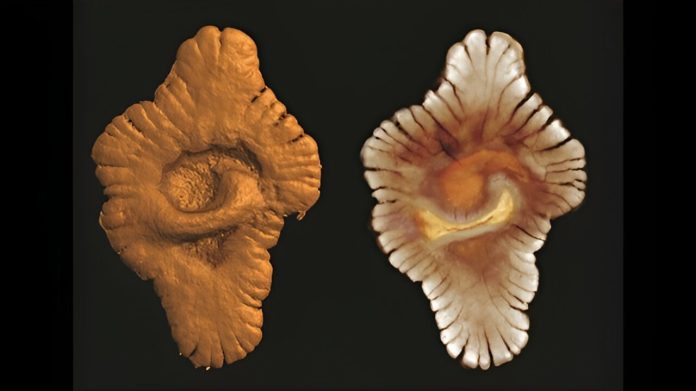
A new study claims that complex life on Earth began around 1.5 billion years earlier than previously believed.
An international team of scientists has uncovered environmental evidence of the earliest experiments in complex life evolution.
Until now, it was widely accepted that animals first emerged on Earth around 635 million years ago.
However, a team led by Cardiff University has found evidence of a much earlier ecosystem in the Franceville Basin near Gabon on the Atlantic coast of Central Africa, dating back over 2.1 billion years.
Their study, published in Precambrian Research, describes an episode of unique underwater volcanic activity following the collision of two continents.
This event created a nutrient-rich environment, acting as a ‘laboratory’ for the earliest experiments in complex biological evolution.
The lead author, Dr. Ernest Chi Fru from Cardiff University’s School of Earth and Environmental Sciences, explains that phosphorus availability is crucial for the evolution of life, particularly in the transition from simple single-cell organisms to complex organisms like animals and plants.
Previously, it was known that increases in marine phosphorus and seawater oxygen concentrations were linked to biological evolution around 635 million years ago. This new study adds an earlier episode, occurring 2.1 billion years ago.
There has been much debate among scientists about the validity of large-sized fossils of macroorganisms from this period, which are the earliest of their kind in the geologic record.
The Cardiff-led team identified a connection between environmental changes and nutrient enrichment before these fossils appeared, which may have triggered their evolution.
The team’s geochemical analysis of marine sedimentary rocks from 2.1 billion years ago provides new insights into these unusually large-sized fossils in the Francevillian basin. Dr. Chi Fru explains that underwater volcanoes, following the collision of the Congo and São Francisco cratons, restricted and even cut off this section of water from the global ocean, creating a nutrient-rich shallow marine inland sea.
This environment, rich in cyanobacterial photosynthesis, led to the oxygenation of local seawater and the creation of a large food resource.
This nutrient-rich environment likely provided enough energy to promote the growth in body size and complex behavior observed in the primitive, simple animal-like life forms found in these fossils.
However, the restricted nature of this water mass and the hostile conditions outside it for billions of years likely prevented these life forms from spreading globally.
The study suggests a two-step evolution of complex life on Earth. The first step followed a major rise in atmospheric oxygen 2.1 billion years ago, and the second step followed another rise in oxygen levels 1.5 billion years later. While the first attempt failed to spread, the second led to the animal biodiversity we see today.
The team is continuing their research to better understand the environmental conditions that explain the appearance of these ancient fossils.



